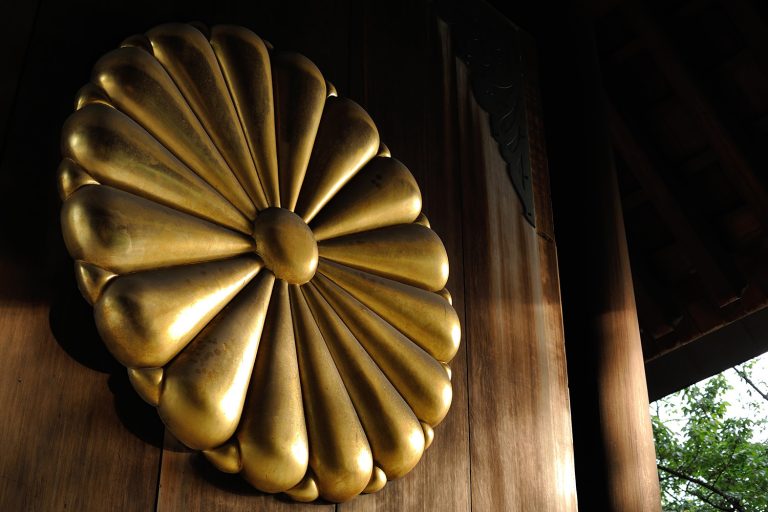Before Western studies on esthetic Within philosophy they reached Japan, it had already determined some concepts. These concepts are abstract and difficult to define in western terms, to the extent that expressions that are transported to other languages as such. The 10 principles Japanese aesthetic and a rough definition of them.
Kanzo (簡 素)
Simplicity or elimination of surpluses. Things are expressed in a plain, simple and natural way. It reminds us not to think in terms of decoration but of clarity, a kind of clarity that can be achieved through the omission or exclusion of the nonessential.
Fukinsei (不均 整)
Asymmetry or irregularity. The idea that the regulatory balance in a composition through irregularity and asymmetry is a central precept of Japanese aesthetics. He enso (“Zen circle”) in painting, for example, it is often drawn as an incomplete circle, symbolizing imperfection as part of existence. In graphic design also the asymmetric balance is dynamic and beautiful. Try to see (or create) beauty through balanced asymmetry. Nature itself is full of relationships of beauty and harmony that are asymmetrical and yet balanced. This is the dynamic beauty that attracts.
Shibumi(渋 味)
Beautiful being discreet, or being precisely what is intended and not elaborated. It should be straightforward and simple, without being ostentatious. Aesthetics in elegant simplicity, articulate brevity. The term is sometimes used today to describe something beautiful and minimalist, including technology and some consumer products. Shibui (渋 い) literally means “bitter”.
Shizen (自然)
Nature. The absence of pretense or artifice, a completely creative purpose and without being forced. Ironically, the spontaneous nature of the Japanese Garden that the viewer observes is not accidental. It is a reminder that design is not an accident, even when trying to create an environment with a feeling of naturalness. It is not raw nature as such, but one with greater purpose and intention.
Yūgen (幽 玄)
Subtlety, hidden beauty, mysterious depth, the hidden. A Japanese garden, for example, can be said to be a collection of subtleties and symbolic elements. Photographers and designers can think of many ways to visually involve more without teaching the whole, that is, teaching more while teaching less.
Datsuzoku (脱俗)
Freedom from rigor or formula. Escape from the daily routine or the ordinary. Out of this world. Transcending the conventional. These principles describe the feeling of surprise and amazement when one realizes that one can be free from the conventional. Professor Tierney says that the Japanese garden is itself “made of raw materials from nature and its achievement in revealing the essence of nature as a final surprise. Many surprises are waiting around a Japanese garden ”.
Seijaku (静寂):
Tranquility or an energized calm, stillness, silence, solitude. It is related to the feeling you have in a Japanese garden. The opposite feeling of seijaku it would be noise and disturbance. Come to a feeling of “active calm” and stillness.
Wa (和)
Harmony, peace, balance. The kanji 「和」 designates something Japanese or made in Japan, as in 「和 食」 (Japanese food); 「和 室」, Japanese room; 「和服」, Japanese dress; or 「和 傘」, Japanese umbrella. The idea of harmony and balance is fundamental in Japanese culture and in human relationships. Harmony is the key aspect to develop sensitivity in Japan. Aesthetically, wa it is essential to any good design.
Ma (間)
The void, interval of space or time. Ma as concept can be found in many of the Zen arts, including traditional gardens and the ikebana, theater noh, etc. Ma it does not mean the kind of empty space that is in the background; the void is frequently primed to be a focal point. Ma allows a sense of energy or movement within the design. Ma it can be shown in traditional music in the form of silence or pauses. In ikebana the idea of emptiness allows each flower to breathe and also reveals the contrasts and balance of the asymmetrical arrangement.
Yohaku no bi (余 白 の 美)
Appreciation of beauty in what is tacit, what is implied or what is not expressed in a work of art. A rough modern idea is “less is more.” His focus is on what is left out. It is related to the idea of ku (empty) and mu (the nothing). It can be seen in Zen gardens consisting of large sections of raked sand or gravel and in ink paintings with large portions of untouched paper. The term literally means “beauty of the extra white.” Although the term dates back centuries, it can still be heard today.



